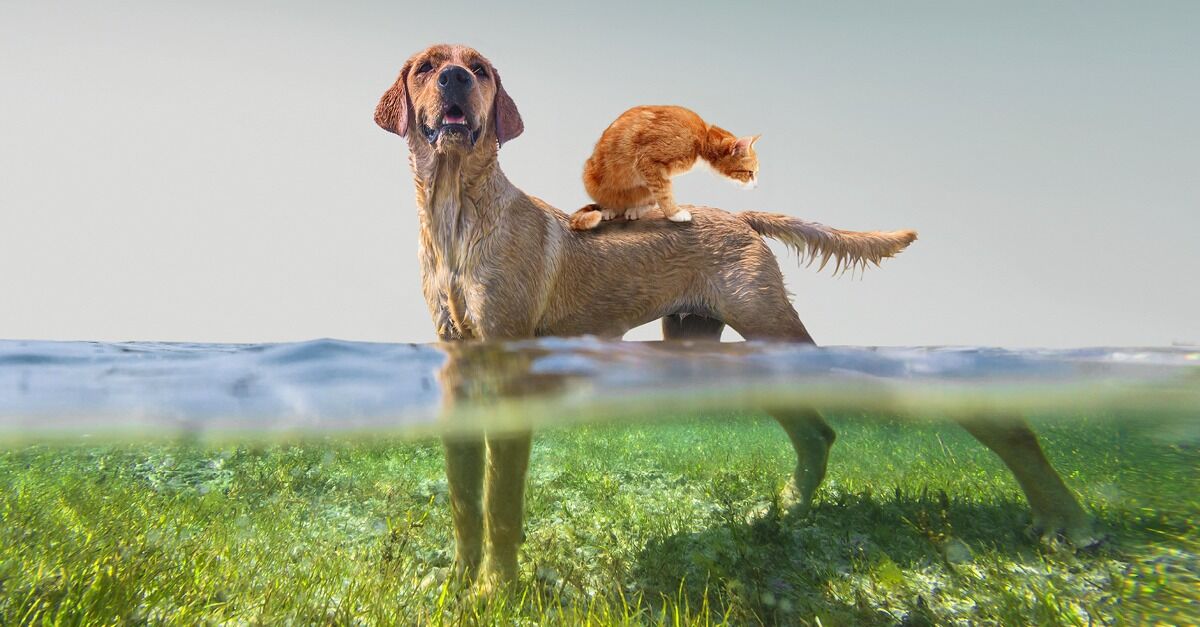

Your region has been set to
Change region
Close


Your region has been set to
Change region
Close



February 23 2021 - News

Like many people, I love to eat seafood and especially sushi. The seaweed wrapper and a sea lettuce salad on the side are not only delicious, but healthy too. And that applies to our beloved pets as well. I believe that seaweed will soon become one of the most popular pet food ingredients: it is sustainable, nutrient-rich and full of prebiotic dietary fibers. But with more than 10,000 species of red, brown and green seaweed to choose from, what do you need to consider before using seaweeds in pet food?
Compared to land-based plants, seaweeds grow much more rapidly, make more efficient use of space, and absorb nutrients over their entire surface area from the abundant resources in circulating seawater. At the same time, cultivating seaweeds does not require land, fresh water or chemical fertilizers. Intensive fresh water use and wasteful fertilizer run-off are two negative factors associated with modern agriculture, while land is increasingly needed for a growing global population.
What are the pet health benefits of seaweeds?
Seaweeds are an excellent source of both soluble and insoluble, fermentable and non-fermentable dietary fibers, which are the cornerstone of a healthy diet for both humans and pets. In particular, seaweeds have a very high content of soluble prebiotic dietary fibers, which contribute to good gut health and lower the risk of contracting different kinds of disease. Additionally, seaweeds are sources of amino acids, vitamins and minerals. Together, these bring health benefits such as strengthening the immune system and managing inflammatory problems related to joints, muscles, skin/coat and heart and bladder diseases.
What is the difference between red, brown and green seaweeds?
Not all seaweeds are equally suitable for use in pet food and they need to be carefully selected. Beneficial seaweeds for use in pet food are found in all three color types: red (Rhodophyta), brown (Phaeophyta) and green (Chlorophyta). These are very broad groups. Critical parameters for selecting the seaweeds most suitable for use in pet food include iodine and arsenic levels, type and content of fibers, crude ash, and palatability. Brown seaweeds have the highest arsenic and iodine levels, often limiting their inclusion rates beneath the level needed for gut health efficacy. Green seaweeds have much lower levels of iodine and arsenic, and can therefore be used at the highest rates.
Which seaweeds are most suitable for use in pet food?
For use in pet food applications, seaweeds should be selected based on efficacy, palatability, nutritional limits, and adherence to regulations. Iodine and arsenic levels in pet food can be kept within safe ranges by using green seaweeds or using seaweed blends. As different seaweeds from all three color types can have different properties, you can use blends to achieve broader efficacy, targeting specific performance and bioactivity. Particularly green seaweeds offer a cost-effective ingredient with a low level of contaminants and which are fortunately also the most tasty to both humans and pets. I sincerely hope that cats and dogs will soon be able to enjoy the taste and health benefits of green seaweeds more and more.
Our white paper explains all you need to know about using different kinds of seaweeds in pet food.
About Geert van der Velden
Geert van der Velden is IQI Trusted Petfood Ingredients’ Innovation Manager responsible for Business Development, generating new products and concepts that meet the needs of existing and new customers. Geert has more than 25 years’ experience in the international pet food industry and has gained knowledge and experience in many sections of IQI’s business.
